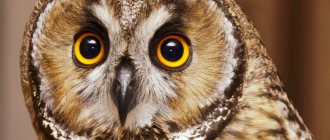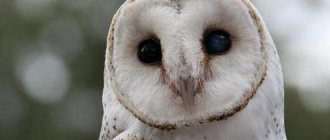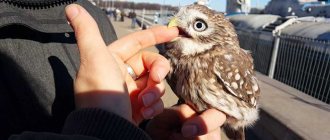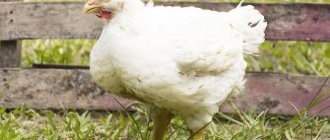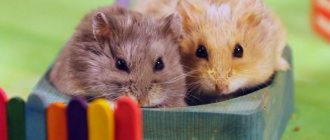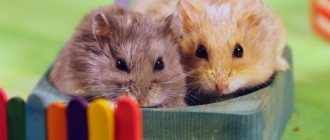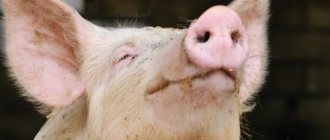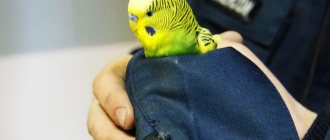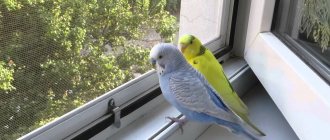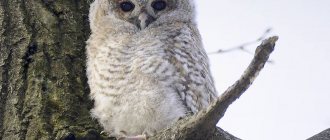The Scops Owl is a member of the common dream family. Like its relatives, you cannot see the Scops Owl in daylight. The bird is active at night. The owl received the nickname “Splyushka” not due to its reputation as a dormouse, but for its characteristic cry, reminiscent of the word “sleep”. At night, the bird can be recognized precisely by this sound. The owl is very tiny, measuring from 15 to 20 centimeters and weighing up to 120 grams. This species can perfectly camouflage itself in the wild, all thanks to its plumage. The color of the owls is dark brown with a gray pattern, reminiscent of a tree trunk.
Owls have very large eyes and usually have bright yellow irises. The beak of the scops owl is hidden in feathers. The main difference between a female and a male is its size, otherwise it is quite difficult to distinguish them. Females are always much larger than males. Both sexes have developed feather “ears”. This owl can increasingly be found as an exotic pet.
Origin of the species and description
Photo: Splyushka
Otus scops Linnaeus Scops Owl or Common Dawn. The bird belongs to the order Owls, the owl family. Owls are very ancient birds. The remains of owls have been known since the Eocene. Owls formed as an independent species about 70 million years ago.
Based on the remains of extinct owls, representatives of the following genera were identified: Nectobias, Strigogyps, Eostrix. E. mimika belongs to the genus Eostrix; this species is recognized as the oldest species on our planet. The owls that we are used to seeing have lived on earth for more than a million years. Scientists now know that the barn owl lived in the Middle Miocene, and eagle owls have been known to the world since the late Miocene.
Video: Splyushka
Ancient owls may have been active during the day like other ancient birds, but since owls became predators, they have developed a special way of hunting that is practiced only by them. This type of hunting is only possible at night.
It is very important for the bird to remain invisible to its prey. Seeing the prey, the bird lies in wait for it and suddenly attacks. At the moment, owls are a well-separated group in all respects. In systematic terms, they are close to species such as Caprimulgiformes and Psittaciformes. The species Otus scops was first described by the Swedish scientist Carl Linnaeus in 1758.
Taxonomy
Latin name - Otus scops English name - (common) scops-owl Bird class - Aves Order - owls (Strigiformes) Family - owls or true owls (Strigidae)
This scoop (little owl) received such an affectionate and slightly funny name not because loves to sleep, and because of his “spitting” cry, he can hear it at night. It is also called “dawn” because its “spitting” is often heard early in the morning after sunrise, that is, from the evening dawn to the morning.
Appearance and features
Photo: Scops Owl
Zorka is a small bird. The owl is slightly larger than a starling. The body length of an adult male is 20-22 cm, the wingspan is 50-55 cm. The weight of the bird is only 50-140 grams. The feather color of owls is mostly gray. The feathers have a dotted pattern with thin black strokes. White spots are visible in the shoulder area of this species of owl. The underside of the bird is a darker, gray color; thin transverse strokes and streaks are also noted on the feathers. The bird's head is small and round in shape.
Fun fact: Owls have three pairs of eyelids. Some of them blink, others protect the eyes from dust during flight, and others are used during sleep.
The bird's face is also gray. On the sides there is an outline of feathers of a darker color. The face below merges with the throat. In many birds, circles of a lighter color can be seen around the eyes, and between the eyes there is a ridge of the same color as the entire face.
The color of the irises of the eyes is yellow. On the head there is a sharp black beak. Owls' toes are exposed. Owls have an alternative route for blood through the vessels, and a special cushion of air that prevents rupture by the vessel during head movement, and helps to avoid stroke.
Interesting fact: Due to its anatomical features, the owl is able to turn its head 270 degrees, however, this bird cannot move its eyes.
When the chicks first hatch, they have white plumage; later it turns gray. Females and males usually do not have any special color differences. On the bird's head there are also visible "ears" made of fluff. During the flight, the dawn can be distinguished from the owl by its faster flight. When birds hunt at night, they flutter gently like a moth.
Voice of a bird. Male Scops Owls have a long and sad whistle. This whistle is somewhat reminiscent of the word “sleep” or “fuyu”. Females make sounds similar to a cat's meow. Wild owls of this species live for about 7 years, however, if the bird is kept in captivity, it can live up to 10 years.
Conditions
Once again touching on the topic of comfort, we can say that many people, when getting this or that animal, have no idea what conditions it requires. Neglecting the above, they can ruin the life of a bird in captivity.
Even when getting an ordinary hedgehog, it is worth considering the fact that riding on curtains is his favorite pastime. Unknowing owners, of course, will scold the new pet. In the same way, any exotic animals may well not live up to expectations. Before you start them, you need to find out as much information as possible about the correct content, communicate with knowledgeable people, weigh the pros and cons, and only then make the right decision.
Where does the Scops Owl live?
Photo: Splyushka in Russia
Zorka can be found in every corner of Europe. These owls are common in Asia Minor and Siberia, Africa and the Middle East, Central Russia. Dawn birds mainly live in forest and steppe areas. They settle primarily in deciduous forests. They look for hollows for living and nesting, or make them themselves. Hollows are located at a height of one to 17 meters above the ground. The average diameter of hollows is from 6 to 17 cm.
In mountainous regions, birds like to build nests in rock niches. Owls usually choose the deepest niches with a small entrance diameter; the owl bird considers such a refuge to be the safest. It is rare to settle in birdhouses; this is done by birds that are accustomed to people and constantly live in urban environments. Can settle in vegetable gardens, orchards and parks. In the Urals it lives in deciduous forests, oak forests, and linden trees.
In Siberia, owls nest in poplar forests and on transversely rocky terrain. Quiet deciduous forests are chosen for egg laying and nesting. Dawns are migratory birds. Birds arrive from wintering in central Russia and Siberia in mid-May; in September of the same year, birds fly south. Dawn birds are not uncommon, quite a lot of them live in forests throughout our country, however, they are very careful and secretive birds. They are nocturnal, so people may simply not notice them, but their specific whistle is difficult to miss.
Now you know where the Scops Owl lives. Let's see what she eats.
What does the Scops Owl eat?
Photo: Little Scops Owl
Like all owls, the Scops Owl is a predator. True, it mainly hunts moths and insects.
The main diet of the dawn bird includes:
- butterflies;
- Zhukov;
- frogs and toads;
- lizards;
- snakes and snakes;
- Small rodents, squirrels and other small animals.
Scops owl hunts at night. At night, this predator stalks its prey quietly sitting in ambush. Owls have exceptional hearing and are able to locate prey within seconds. Before attacking, the owl turns its head in different directions, looking intently at its prey. Later, choosing a time when the victim is distracted by something, the Scops Owl quickly attacks. Sometimes an owl can stretch its wings in pursuit of a beetle or butterfly; it flutters silently after them.
Having caught its prey, the owl holds it in its paw, as if examining it and touching it with its beak; most often, it does this when the poor animal is still moving. After inspection, the owl eats its prey. Owls are unpretentious when it comes to food; they hunt for what they can catch at the moment.
Owls are good at exterminating rodents; if owls settle near cultivated fields, this is only beneficial, because in just one month this bird can exterminate up to 150 mice. However, owls also harm small fur-bearing animals such as minks and small rabbits, so in places where these animals are bred, owls are not very popular.
What to do to have offspring?
In order for birds of predatory origin to produce offspring, it is necessary to display the natural conditions of their habitat as naturally as possible. It is definitely necessary to build a nest in a hollow or box. And in order for the offspring to be healthy, one must carefully maintain cleanliness in its habitat, as well as monitor the optimal level of humidity.
When organizing a place for an owl, you should take into account that in the wild it is a nocturnal predator. Therefore, it is quite possible to get by with natural lighting. When night falls, the owl will perfectly orient itself in space, as it has excellent vision in the dark. Also, the room where the pet lives should be effectively isolated from noise. If this is not possible, then it is necessary to at least avoid sharp sounds or noises. This may agitate the bird, causing it to become scared.
Features of character and lifestyle
Photo: Pygmy Scops Owl
Scops Owl is a solitary nocturnal bird. During the daytime, the owl usually sleeps, perched on the branch of a tree. The bird is well camouflaged and practically does not move during the day, so it is difficult to notice it on a tree. She may seem like a little bitch. In the daytime, owls let people get very close while trying to remain unnoticed. The social structure of birds of this species is not particularly developed. Owls often live alone. Only during the breeding and nesting period does the male live with the female and protect her and the clutch.
Owls are aggressive, but get along well with people. Owls can live at home and are capable of becoming attached to their owner. In captivity, these birds feel much more comfortable than in the wild. Domestic owls live much longer than their wild relatives. This is because many owls in nature often die of hunger.
The parental instinct of these birds is well developed. An owl hatches its chicks for a long time, practically without leaving the clutch. At this time, the male is close to his family and protects it. It prevents other birds and various animals from getting close to the clutch. Owls lay eggs in the spring, and it is best not to disturb them at this time. A male, protecting his family, can attack not only other birds and animals, but also humans.
Contents in the apartment
Zorka is a freedom-loving bird, but this does not mean that it does not get along well in captivity. You just need to approach this issue very responsibly - study materials on this topic and prepare properly. And, of course, be patient.
Find out also which birds are the fastest on the planet.
Home improvement
An owl does not tolerate cage housing well, unless the cage has a volume of 1.5–2 m. In order for the bird to feel normal, it needs an aviary or a separate room. If you live in a city apartment, there is only the last option. Before letting dawn into your home, it needs to be equipped. First of all, you should remove all mirrors and cover the windows, otherwise the bird may be injured.
In addition, you need to remove any thin curtains and tulles, the scoop may become entangled in them and get scared, which will affect the future of your relationship. You need to install wooden perches on the walls; you can wrap them in soft cloth. It is necessary to provide the bird with round-the-clock access to fresh water.
In the event that you still keep the bird in a cage, it must be given the opportunity to fly regularly. This point is extremely important for the health of the bird, otherwise it will start to get sick.
Important! Zorka must periodically stretch her wings to avoid stagnation of blood in the vessels.
If you make an imitation of a hollow at home, the bird will be simply delighted. It is quite simple to make; you only need a suitable tree trunk with a small branch. The rest is done with a chisel and hammer. Although if you walk around the forest and search, you can find a suitable old tree that can be adapted for your purposes.
The cage must be equipped with a tray to prevent the owl from walking on its own feces.
How to tame
From the first days of an owl’s life, it is necessary to begin to establish relationships with it; do not forget, this is a very smart bird. This circumstance can play into your hands, but it can also complicate the task. The good thing is that the bird quickly understands everything and reacts accordingly. But it is precisely these qualities that can prevent you from achieving your goal - establishing friendly relations.
The owl will remember any of your mistakes, weaknesses, manifestations of aggression or impatience and may withdraw into itself. The barrier that has arisen will be much more difficult to overcome than building a relationship from scratch. So try not to fall below your pet in terms of intelligence and mental organization, despite the fact that this species is much older than humans, and this is not easy to do.
Important! When taming a Scops Owl, remember the main rule: under no circumstances should you take it into your hands by force, against its will. The hissing of the bird and the clicking of its beak will tell you that it does not want to make contact at the moment.
It's easiest to get along with a chick, so when choosing a pet, keep this in mind. Try to purchase not an adult, but a chick. Once the owl is in your home, it will most likely cower in a corner, scared. In addition, it is quite possible that she will not eat for several days. Don’t try to impose yourself on her or show the slightest signs of impatience, just wait - this is the most correct and effective course of action.
Watch the dawn carefully - as soon as it becomes active, and sooner or later this will happen, feed the bird. Several such eating procedures, and the Scops Owl will understand that nothing bad should be expected from you. You will notice when the wall between you collapses, you need to take advantage of this moment - it’s time to tame the scoop.
First of all, take care of thin-skinned gloves - the bird has sharp claws that can injure your hands. And the best way to get along with an owl is to give it the opportunity to stay in your arms for as long as possible.
As already mentioned, the key to building friendly relationships is your patience. Even if something doesn’t work out, Dawn doesn’t reciprocate your feelings, doesn’t want to show friendly feelings, don’t try to put pressure on her - this will only make things worse.
Along with the gloves, prepare the owl's fetters. You will need them for further walks. You can start them when the bird gets used to you and becomes tame, otherwise it may fly away for good. Moreover, it is not at all necessary that she will want this, it’s just that the scoop may not find a way back.
Wear harnesses from the first days of life so that your pet gets used to them.
Find a toy for your pet. It could be a ball or a soft but dense doll that he cannot immediately tear apart with his sharp claws and beak. But toys or other objects containing small parts, such as beads, should absolutely not be given to a bird. If he swallows such a trifle, it can lead to dire consequences.
Despite some natural aloofness, the Scops Owl loves games. Especially after he gets used to his owner. This bird generally becomes very attached to people; there have been cases when, after parting with its owner, the owl stopped eating. She loves to be given time and sit on her owner's hand or shoulder.
Also learn about the character, habits and training of owls as pets.
What to feed
At home, owls are usually fed mice, day-old quails and chickens. They are bought in specialized pet stores. There you can buy everything fresh and with a guarantee that the animals and birds are healthy. You should not buy food at the market; there is no certainty that the mice you purchased are not carriers of the disease. Feeding owls is generally an extremely responsible procedure, and it should be treated accordingly.
Due to the peculiarities of its digestion, the Scops Owl throws out pellets some time after eating. This is a lump of undigested animal remains: wool, bones, claws, etc. From the state of the pellet, you can learn not only how well or poorly the digestive system functions, but also about the health of the bird in general.
Important! You cannot use adult chicken or beef to feed the zorka.
You can't feed Zorka chicken breast. Since the gastrointestinal tract of a bird is designed in a special way, it is necessary that the food contain parts that the stomach is not able to digest. They help the digestive process by acting as millstones or meat grinder knives. If these abrasives do not enter the stomach for some time, the digestive process will begin to rebuild. This will have a detrimental effect on your pet's health and can lead to death.
If, nevertheless, you are forced to introduce chicken fillet into your diet (it is not always possible to find chickens and mice, and of the highest freshness), add grated carrots, wool, shrimp, or only shells to the meat. But if necessary, it is better to use not chicken fillet, offal - hearts and stomachs.
When feeding cutworms at home, you should adhere to the following rule: the less the bird flies, the less fatty food it should be fed. If she lives at home in a cage, fats should be practically eliminated from her diet. For a pet living in an enclosure or regularly flying, the share of such food can be increased.
Important! After 8
–
10 hours after eating, the owl should regurgitate pellets; in a healthy bird they do not emit an unpleasant odor and have no signs of blood.
The droppings should be liquid, white with small dark spots. An owl swallows food whole (if it is physically able to do this); it does not tear it with its claws, using them only to obtain food. So give her the whole chickens and mice. But the quails need to be cut up and their entrails removed, as they may contain parasites.
You need to feed the owl at the same time, 1-2 times a day. For the next 8–10 hours after eating, you need to carefully monitor its condition. If Dawn becomes apathetic, lethargic, sits for a long time without moving, with her eyes closed, and the feathers under her tail become wet, these are the first signs of poisoning. The freshness of food and its quality should be treated very responsibly.
You will instantly and unmistakably know that an owl is sick by its changed behavior. It is strikingly different from the bird’s always cheerful and playful mood.
In addition, the dawn needs complementary foods. For this, earthworms and insects are used. As for carbohydrates, you need to gradually add grated carrots, dandelions, berries, and fruits to your diet. It is quite difficult to train an owl to eat food of plant origin, although it must be done. Be prepared that you will have to try many different options before the bird likes a particular fruit or vegetable and the bird begins to eat it.
Keeping an owl at home is a rather difficult task, which is further complicated by the fact that there are very few veterinarians specializing in this species. That is, responsibility for the health of the pet falls entirely on the shoulders of the owner.
Care
In order for Dawn to grow healthy, it needs competent care. The bird loves water treatments very much - provide it with a container for bathing and drinking. The water must be regularly replaced with fresh water and ensure that it is at normal room temperature. In general, special attention should be paid to bathing - in addition to the fact that the procedure gives the owl pleasure, it is necessary for hygiene. Especially during the molting period. This process for birds living in captivity is somewhat more drawn out than for those living in natural conditions.
The first moult usually begins at the end of January and lasts about one and a half months. The time and duration of the next one is greatly influenced by reproduction, which will be discussed in more detail below. During shedding, remove any feathers or fluff found in the room.
After each meal, remove all leftovers. The cutworm's food is of animal origin; its remains quickly deteriorate and, in addition to the unpleasant odor, can become a source of pathogens of various diseases. So be prepared to clean up mouse and bird entrails every day. In addition, you constantly need to remove the dawn's droppings and pellets. This is a capricious bird, which is very difficult to train to relieve itself in a certain place.
Important! It is very important that the female, when sitting on the eggs, enters the molt with a sufficient supply of fat. Otherwise, while feeding the offspring, she may die from exhaustion.
There is a special vaccination for owls kept in captivity. This vaccination will protect against most diseases that can pose a threat to the bird. In addition, the veterinarian will prescribe a complex of necessary vitamins and minerals, since birds living at home in any case do not fully receive what wildlife gives them.
Social structure and reproduction
Photo: Splyushka
Scops owls fly to their usual habitats from wintering in late April - May. The nesting and breeding period falls in May-July. Scops owls make their nests in hollows in trees or in rock crevices. Deciduous forests are often chosen for nesting.
These birds form pairs of a male and a female, and remain faithful to each other. After mating, the female lays from 1 to 6 eggs at intervals of several days. Each egg weighs on average about 15 grams. For a long 25 days, the female incubates the eggs almost without leaving the clutch, even if she is driven away, the female will return to her place. The male is nearby at this time and protects his family from attacks by predators.
Little owlets are born covered in white fluff, but they are blind. Their eyes will open only towards the end of the first week of life. Parents feed their brood for a month. At first, only the male goes hunting, after which the female also joins him.
On average, the male brings food to his chicks every 10 minutes. If there is enough food for all the chicks, they will all survive. However, there are years when the chicks do not have enough food and the weakest chicks die. At the fifth week of life, the chicks leave the nest and begin to live and hunt on their own. Sexual maturity in both females and males occurs by the 10th month of life.
Natural enemies of scops owls
Photo: Scops Owl
Although the owl is a bird of prey with a fiery disposition, it has quite a lot of enemies.
The main enemies of scops owls are:
- Hawks are afraid of owls at night, however, during the day they can attack and cripple an owl;
- Falcons, crows;
- Foxes;
- Raccoons;
- Ferrets and martens.
Another reason for the nocturnal lifestyle is that birds, which are the owl’s enemies, become active during the day. During the day, the owl can be attacked by hawks and falcons. These birds are much faster in flight than owls. Hawks can easily catch up with an owl and eat it, although in most cases they simply maim the owls. Crows, falcons and many other birds of prey are also aggressive towards owls.
For inexperienced and weak owls and chicks that have fallen out of the nest, the main threat is represented by mammalian predators. Foxes, raccoons and martens, ferrets. Near human dwellings, cats can climb into a nest and destroy it. Hawks, falcons and eagles can steal a chick from a nest, so owls try to make nests in hollows and crevices that are inaccessible to these birds.
In addition to the enemies of owls observed in the animal world, the main enemy of owls is still humans. It is people who cut down the forests in which these cute birds live. They pollute the environment with emissions of harmful substances. Owls are excellent forest orderlies; they eat harmful rodents and insects, so it is in human interests to preserve the owl population. Let's be more careful with nature and save these cute creatures.
